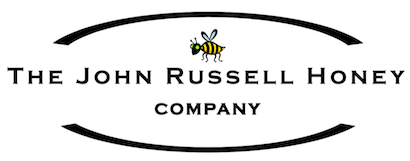The other, other, other thing that bees make...
Propolis (commonly pronounced pro-poe-liss) is "bee glue," and it is the bane of beekeepers because it often causes headaches in inspecting and manipulating hives. In the hot summer it is sticky and difficult to remove from clothes, gloves and tools. In cooler weather it becomes hardened and easily cracks during manipulation, which can increase a hive's defensive behaviour.
Check out our guide for why humans might use propolis by clicking here
Propolis starts as collected material like nectar and pollen. Generally, the best sources are resinous sap-producing plants such as poplar, beech, birch, oak and pines. Propolis is more specifically a mixture of some pollen and beeswax, bee saliva and those resins, which contain terpenes and volatile oils. The latter give the product its fragrant odour. It is the pharmacologically active constituents, however, which have attracted the most attention as useful in human health. These include flavonoids, phenolics and aromatics. The former are considered beneficial in scavenging free radicals.
"Typical" northern temperate propolis has approximately 50 constituents, primarily resins and vegetable balsams (50%), waxes (30%), essential oils (10%), and pollen (5%). Propolis also contains persistent lipophilic acaricides, a natural pesticide that deters mite infestations.
Bees seal cracks or fissures within the colony body with propolis to protect the colony from the elements, such as rain and cold winter drafts.

Propolis functions may include:[3]
- Reinforce structural stability and reduce vibration
- Provide improved thermal insulation to the hive and reduce water loss
- Provides protection from pathogens, via anti-fungal and antibacterial properties[4][5]
- Make the hive more defensible against parasites and predators by narrowing the existing entrance (in wild colonies) to a single "choke point"
- Mitigate putrefaction within the hive. Bees usually carry waste out of and away from the hive. However, if a small insect-eating predator such as a tree frog, lizard or mouse, for example, finds its way into the hive and gets stung to death, bees may be unable to carry it out through the hive entrance. In that case, they would attempt instead to seal the carcass in propolis, essentially mummifying it as well as making it odourless and harmless.
(This last point is relevant to the ancient Egyptians who adopted propolis in their mummification techniques!)
So propolis has a long history in recorded human civilization, since the time of the Roman Pliny and Aristotle the Greek. It has been employed against a large array of ailments including colds, sore throats, skin problems, stomach ulcers, burns, hemorrhoids, gum diseases and wounds.
In the world of modern medicine, although not generally approved by many physicians, the benefits of therapy using propolis are difficult to ignore. It has been observed and employed by practitioners throughout history and continues to be studied (and those studies peer reviewed) as we seek discovery on the efficacy of historical treatments.
As a beekeeper, this stuff is invasive as it stains and sticks to everything I own. From bee suits to steering wheels, it follows me around like a tacky curse. However it is useful, and you will always find some in my bathroom cabinet for when a cold sore pops up. I have used it to treat dandruff with some positive results, but keeping my hair short and manageable fixes that too so go figure.
Some actual research that you may find interesting:
One study found that propolis can help people who have had traumatic burns heal faster by speeding up new healthy cell growth.
Another study found that a topical propolis alcoholic extract was more effective than a steroid cream in reducing mast cells in oral surgery wounds. Mast cells are associated with inflammation and slowed wound healing.
Lastly, this study found when topical propolis was applied three times a day, it helped to heal cold sores faster than no treatment. The researchers found the propolis cream not only reduced the amount of herpes virus present in a person’s body, but also protected the body against future cold sore breakouts.
Sources:
- Barroso, P., Lopes-Rocha, R., Pereira, E. M., Marinho, S. A., de Miranda, J. L., Lima, N. L. & Verli, F. D. (2012, October). Effect of propolis on mast cells in wound healing. Inflammopharmacology, 20(5), 289-294
ncbi.nlm.nih.gov/pubmed/22179947 - Chi-Fung Chan, G., Cheung, K., & Man-Yen Sze D. (2013, June). The immunomodulatory and anticancer properties of propolis. Clinical Reviews in Allergy & Immunology, 44(3), 262-273
ncbi.nlm.nih.gov/pubmed/22707327 - Kurokawa, M., Wadhwani, A., Kai, H., Hidaka, M., Yoshida, H., Sugita, C., … Hagiwara, A. (2016, May). Activation of cellular immunity in herpes simplex virus type 1-infected mice by the oral administration of aqueous extract of Moringa oleifera lam leaves. Phytotherapy Research, 30(5), 797-804
ncbi.nlm.nih.gov/pubmed/26814058 - Martinotti, S., & Ranzato, E. (2015). Propolis: a new frontier for wound healing? Burns & Trauma, 3(9)
burnstrauma.biomedcentral.com/articles/10.1186/s41038-015-0010-z - Saeed, F. et al. (2015, August 11). Propolis to curb lifestyle related disorders: an overview [Abstract]. International Journal of Food Properties. 19(2): 420-437
tandfonline.com/doi/abs/10.1080/10942912.2012.745131 - Sforcin, J. (2016, June). Biological properties and therapeutic applications of propolis. Phytotherapy Research, 30(60), 894-905
ncbi.nlm.nih.gov/pubmed/26988443

